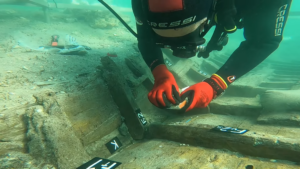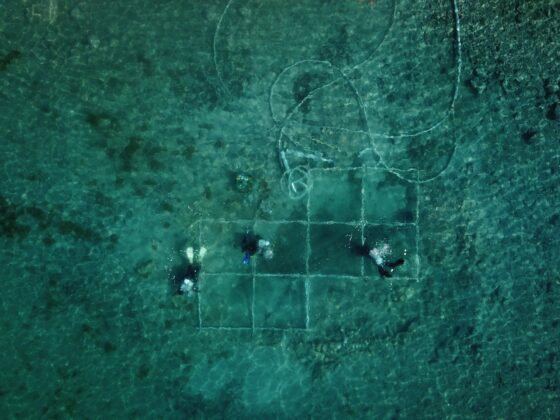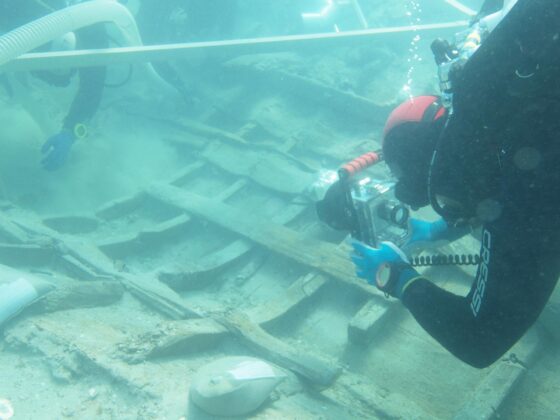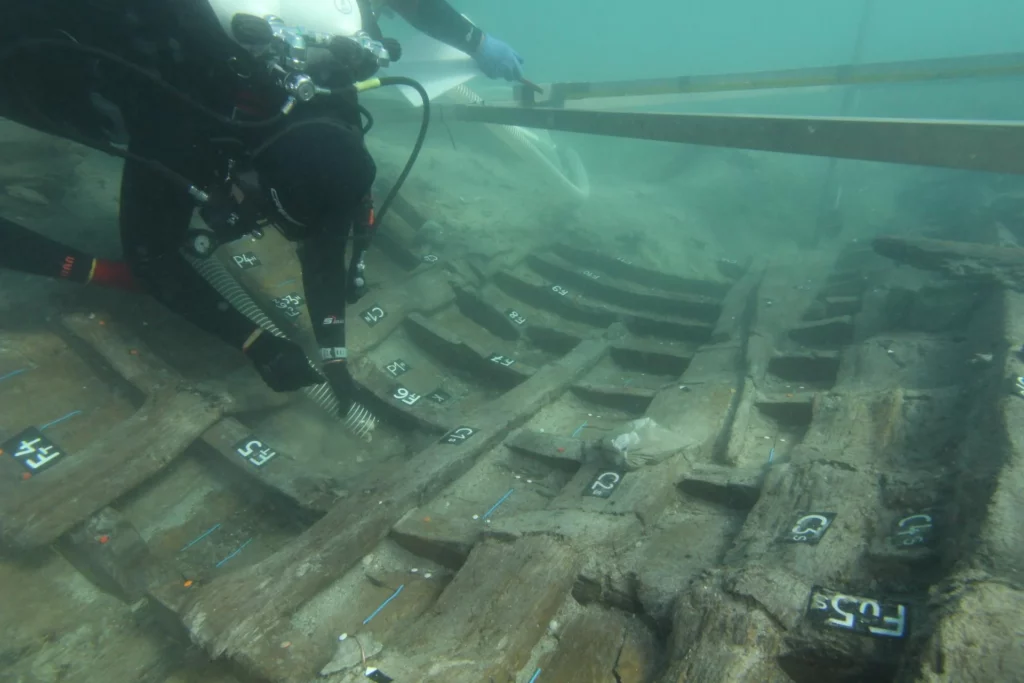
VIDEO: 2,000-year-old Roman boat discovered in sea off Croatia

Croatian archaeologists have discovered a Roman boat in the ocean off Sukošan, which is estimated to date from the 1st century.
The wooden boat, which is resting at a depth of just two metres, is remarkably preserved after being buried in sand for 2,000 years.

“The ancient port of Barbir near Sukošan was discovered in 1973, and for a long time it was documented only on the surface, thanks to research by archaeologist Boris Ilakovac,” Mladen Pešić, director of the International Centre for Underwater Archaeology in Zadar, tells Croatian news agency Hina.
“In 2017, new, more serious work began in the area, in parallel with the research on a Roman villa on the mainland, which was significantly damaged due to modern construction. Luckily, part of the site under the sea is well preserved.”
The boat is roughly three metres wide. Around nine metres of its length has been uncovered so far, with excavations to expose it from the sand still ongoing.
Pešić, who is head of a six-year research project in the area, says the only substantial damage to the wreck has been caused by shipworms, which have degraded areas of the vessel that were exposed.
The discovery was made after the research team uncovered a piece of wood with a metal nail inside from the seabed, which prompted further excavation.

“We were hoping that there could be a boat next to that board,” Pešić tells Zadarski. “That’s why last year we opened the first four squares, each with an area of four square metres, and started researching at that location. And indeed, there was a Roman ship there that we dated to the end of the 1st or the very beginning of the 2nd century.”
The shallow depth of the wreck means teams can stay at the site for extended periods of up to two hours, meaning excavations can be done more rapidly.
“With this research, we managed to reach half of the ship,” continues Pešić. “Each element is marked, photographed, and on the basis of this, we will later make plans for the ship itself. Unlike most ancient ships that sink and end up deformed at the bottom of the sea, this one managed to keep its shape. Its entire shell has been preserved, which is [unusual]. We have sent samples from all the wooden elements to France for analysis, and by determining the material, it will be known whether it is local production or production from other regions.”

Research on the second half of the ship will follow in the new phase of research next year. Until then, Pešić says, the site will be protected by layers of sand, geotextile and stone.
The research project is being conducted between the International Centre for Underwater Archaeology, the German Archaeological Institute and partners including the University of Oxford, the University of Zadar and the Museum of Archaeology in Zadar.
It’s not the only unusual shipwreck to be discovered in recent months. In October, MIN reported that an unusual 89-metre steamship that sank in a storm 120 years ago had been found in Lake Superior, according to officials from a shipwreck museum. And, in March, Endurance, the lost ship of Antarctic explorer Sir Ernest Shackleton, was found 107 years after it sank.
